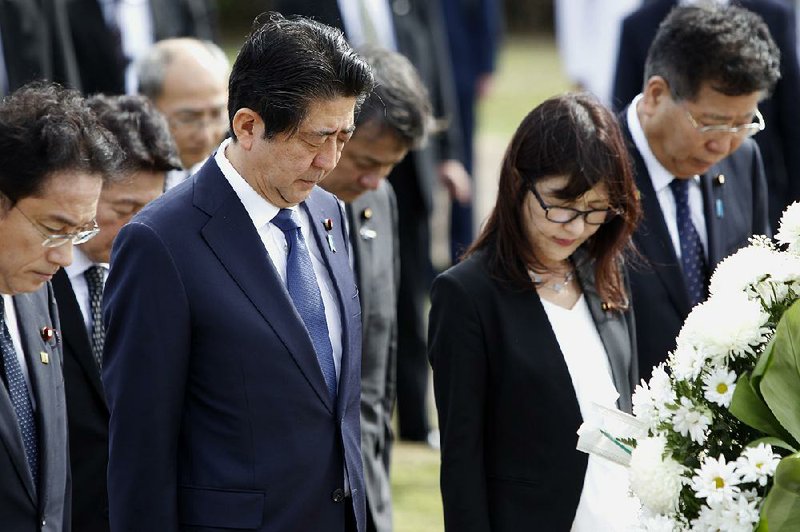PEARL HARBOR, Hawaii -- Japanese Prime Minister Shinzo Abe arrived in Hawaii on Monday to recognize the Japanese attacks on Pearl Harbor.
Abe landed at Joint Base Pearl Harbor-Hickam for the historic visit. He will be the first Japanese prime minister to visit the memorial that honors sailors and Marines killed in the 1941 attack.
The memorial will be closed to the public today when Abe visits the historic site with President Barack Obama, who is vacationing in Hawaii with his family.
The importance of the visit may be mostly symbolic for two countries that, in a remarkable transformation, have grown into close allies in the decades since they faced off in brutal conflict. At the same time, it's significant that it took more than 70 years for U.S.-Japanese relations to get to this point.
Abe won't apologize for Japan's attack when he visits, the government spokesman said earlier this month.
Chief Cabinet Secretary Yoshihide Suga said that "the purpose of the upcoming visit is to pay respects for the war dead and not to offer an apology."
On Monday, however, Suga told reporters that Abe would be "the first to express remorse" at the Pearl Harbor memorial.
The visit comes six months after Obama became the first sitting American president to visit Hiroshima for victims of the U.S. atomic bombing of that city at the end of the same war.
Abe announced this month that he would visit Pearl Harbor. Japan's Foreign Ministry, in news briefings, indicated at the time that he would be the first sitting Japanese prime minister to visit Pearl Harbor, the site of the surprise attack on a United States naval base 75 years ago. It now appears that he is the fourth.
Japan's former leader Shigeru Yoshida went to Pearl Harbor six years after the country's World War II surrender, but that was before the USS Arizona Memorial was built. Yoshida arrived at Pearl Harbor in 1951, shortly after requesting a courtesy visit to the office of Adm. Arthur W.R. Radford, commander of the U.S. Pacific fleet. The office overlooked Pearl Harbor, offering a direct view of the attack site.
And last week, a Japanese-language newspaper in Hawaii reported that it had found in its archives articles about two other visits by sitting Japanese prime ministers in the 1950s, including Nobusuke Kishi, Abe's grandfather.
After the existence of the prior visits was reported, Japan's Foreign Ministry acknowledged that in 1956 Prime Minister Ichiro Hatoyama had visited the United States Pacific Command in Honolulu, and that Kishi had followed in 1957. Kishi was also reported to have visited the National Memorial Cemetery of the Pacific, a mountaintop shrine dedicated to the American dead in several wars.
Abe's office said that "it was difficult to confirm as it was contained in records more than 60 years ago."
In response to the reports, Japanese officials are characterizing Abe's visit as the first by a sitting prime minister with a U.S. president to the memorial atop the remains of the USS Arizona, the U.S. battleship on which the worst losses occurred. The memorial was built in 1962.
Information for this article was contributed by staff members of the Associated Press; and by Motoko Rich, Makiko Inoue and Hisako Ueno of The New York Times.
A Section on 12/27/2016

